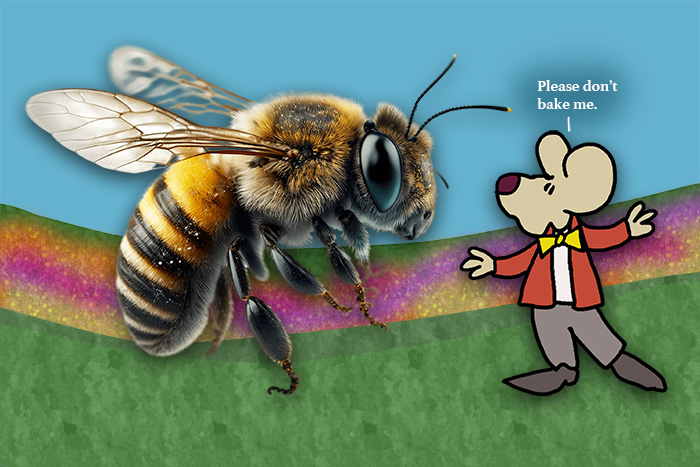When we start out as little whippersnappers, most of us fear bees and flying insects. This probably happened because we got stung or were with someone stung by a bee, a hornet, or a wasp. Depending on what is doing the stinging, it can really hurt. Just for the record, there is something called the Schmidt Sting Pain Index. It is a pain scale that rates the pain caused by different “hymenopteran” stings. “Hymenopteran” is a fancy word for a bee, ant, or wasp. At any rate, this guy, named Justin O. Schmidt, a former entomologist, put together this pain scale.
As flying insects go, here in our area, paper wasps are said to hurt the most, followed by yellow jackets, hornets, and then bees.
But that isn’t where I was going initially. We learned to fear them as kids because of those stings, which, unless you are allergic, are not the end of things.
So, with that, we need to teach kids that bees are good and we should protect them at all costs. We need our bees, and they are disappearing because humans can be stupid oafs. Pesticides, agricultural land development, and climate change are huge causes of their endangerment. We need to shore things up because most of the food we eat exists because of the effort of pollinators.
But that isn’t where I was going either.
I learned some things about bees today, which I thought were pretty interesting. So here are a few.
Most bees don’t make honey.
Most of us assume that all bees are social and live in hives or colonies with a queen. But the truth is, of the 20,000 species of bees found around the world, less than 4% produce honey.
A whole big bunch of bees lead solitary lives. Many dig nests in the ground, or they find abandoned beetle burrows in dead wood to call home.
Bees are incredibly smart.
Of course, the world looks very different to a bee than it does to a human. But bees are intelligent animals. They likely feel pain for one thing. They remember patterns and odors, and it has been found that they even recognize human faces. They can solve mazes and other problems and use simple tools.
Tests have been conducted which show that bees can navigate mazes as well as mice can. They’ve also done studies to prove that bees are self-aware of their body dimensions. Here is one example. Fat bumblebees were trained to fly and then walk through a slit in a board to get to food on the other side. Those rotund bees turned their bodies sideways and tucked in their legs. Squeeze it in, baby, squeeze it in. Like trying to fit into that pair of blue jeans after you’ve downed a whole gallon of ice cream.
One experiment showed remarkable feats of bee learning. Bumblebees were trained to pull a string. So, essentially, they learned to use a tool. Anyway, the string was connected to a plastic disk with hidden depressions filled with sugar water. They could see the sugar wells but couldn’t get the reward except by tugging at the string until the disk was uncovered. (See the note about the ice cream.)
It goes on. Other worker bees were placed nearby in a screen cage where they could see what their trained hive mates did. Once these “watcher” bees were released, this second group also pulled the string for the sweet treats. This study demonstrated what scientists term social learning – acting in ways that reflect the behavior of others.
The research on these things amazes me. But here it is. Research shows that bees are self-aware and may even have a primitive form of consciousness. I don’t know how the clipboards came to this, but they did. Here is another finding. During the six to ten hours bees sleep daily, memories are consolidated within their amazing little brains. There are some indications that bees might even dream. I’ll tell you. I like to think this is true. Bee dreams. Yes, indeed.
There’s more I could tell you. But the bottom line is this. Those bees that seem so aimless in their comings and goings are not aimless at all. They are little thinkers, constantly deciding what they will do next. They are experts in their fields. Moving from flower to flower.
We need these little beings. The being of bees.
””””””””””””””””””
Listen to the bees and let them guide you.
-Brother Adam
””””””””””””””””””
The bee is more honored than other animals,
not because she labors,
but because she labors for others.
-St. John Chrysostom
””””””””””””””””””
“Bees do have a smell, you know,
and if they don’t they should,
for their feet are dusted with spices
from a million flowers.”
– Ray Bradbury, Dandelion Wine
””””””””””””””””””
That bee just might be
